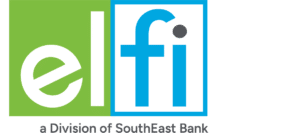Planning for retirement. Could anything be less exciting?
It’s far away. Money’s tight. You’re busy. You have a million other worries.
But do you know what is exciting?
Lounging on the beach. Traveling the world. Having financial freedom. Relaxing in your dream home.
Ready for the unfortunate news?
To make that fun future a reality, thinking about retirement is a necessity — as early as possible.
Even though you’re young and your whole future is ahead of you, it’s essential to start investing in your retirement sooner rather than later. Much sooner.
Here’s everything you need to know about retirement planning in your 20s.
First, why is it so hard for 20-somethings to retirement plan?
It all comes down to expendable cash.
Well-paying jobs are hard to find, and people in their 20s are just beginning their careers. Many can only find part-time jobs with no retirement benefits or incentives. Plus, housing costs are high, starting a family is expensive, and there are plenty of other bills to pay. Oh, and let’s not forget the ridiculous amounts of student loan debt.
The average 20-something makes less than $50,000 per year, has a total of $1,900 in average monthly expenses, and has an average student loan debt of $29,650.
Only 23% of 20-somethings contribute over 15% of their income to savings — with 14% contributing nothing at all — and just 46% are putting money away for retirement.
Sadly, planning for retirement often takes a back seat to other life needs for people in their 20s — especially if they don’t have worthwhile retirement benefits from their employers.
How Much Can You Save On Your Student Loans?
Ready to lower your student loan rate in just a few minutes?
Check today’s rates and see your savings now.

Why is retirement planning important?
Again: money. In an ideal situation, retirement contributions are put away and never touched — out of sight and out of mind. These savings aren’t for short-term needs. They grow over the long haul to give future you total financial stability.
For example, let’s say you make $50,000 per year and put away a modest 4% of your income per paycheck into a retirement fund — beginning at age 25.
If you do this until you’re 65, without ever increasing your contribution percentage, you’ll have about $400,000 saved to help you live a cushier life.
But let’s say you do everything the same, but don’t start until you’re 30.
You’ll only have about $280,000 saved — a whopping $120,000 less to enjoy during senior-hood.
Needless to say, the name of the game is putting away money as soon as you can for maximum reward.
How can you invest in your retirement?
Below are the most common retirement accounts used to build up cash over the long-term.
401(k): These are workplace accounts, offered by employers as a benefit, which allow you to contribute a percentage of your pre-tax paycheck directly to tax-deferred investments. Investments grow tax-deferred until they’re withdrawn, and some employers offer contribution matching programs up to a certain percentage. Solo 401(k) accounts are also available to those who are self-employed with no employees.
403(b): Employees of non-profits or other tax-exempt organizations are usually provided with the option to contribute to a 403(b) plan, which is very similar to a 401(k).
457(b): Another option that shares features of a 401(k), 457(b) accounts are offered through state and local governments. These accounts allow eligible employees to withdraw funds before the age of 59.5 without incurring a penalty.
Traditional IRA: IRAs, or individual retirement accounts, are tax-favored investment accounts that can be opened outside of your employer’s available plans. Putting money into an IRA can be a smart option if your job doesn’t offer a retirement plan or if you’ve maxed out your 401(k) contributions for the year. With an IRA, your investment gains aren’t taxed — which allows them to grow quickly.
Roth IRA: In comparison to traditional IRAs, Roth IRAs are made up of after-tax contributions. However, after your funds are added to a Roth, any money made within it is never taxed again. You can also withdraw money from a Roth before retirement age without penalty, as long as at least five years have passed since your first contribution.
Roth 401(k): This account combines aspects of a Roth IRA and 401(k). It’s an employer-sponsored account, but contributions are made with after-tax funds instead of pre-tax dollars. Those contributions are never taxed again after being in the account for a minimum of 5 years.
Simple IRA: A Savings Incentive Match for Employees IRA can be offered by small businesses with under 100 employees. These retirement plans work similarly to a 401(k), but withdrawing early can have a hefty penalty and borrowing from the account isn’t allowed. However, employers are required to make contributions to the account in addition to your own.
SEP IRA: A Simplified Employee Pension IRA is a retirement plan option for small business owners and those who are self-employed. Contributions can be fully deducted from your taxable income. However, contribution rules tend to make this plan best for companies with few or no employees.
What steps do you need to take for retirement planning?
No retirement planning situation is the same, and there’s no one-size-fits-all approach to saving for retirement. But here are some general steps to get your retirement fund up and running from scratch.
- Research each type of available retirement account for your situation.
- Open the retirement account you’re eligible for that best matches your needs — usually a 401(k) if your job offers it, or an IRA if it doesn’t.
- Determine your currently monthly budget and figure out how much extra cash you have that can be comfortably put toward retirement. Make sure you’re not spreading yourself too thin.
- Contribute a percentage of each paycheck to your new account. Even 2% to 4% can make a big difference in the long run, especially if you start early.
- Check with your employer to see if they offer any retirement benefits. Take advantage of any incentives or match programs — if you don’t, you are leaving free money on the table. If your employer will match up to 4%, contributing a minimum of that amount is in your best interest.
- Monitor your retirement fund and make percentage increases when your monthly budget allows it.
- When deciding between high risk or conservative investments for your retirement account, consider higher-risk options while you’re young and you have more time to recover from market downturns. The closer you get to retirement, the more conservative your investments should become — you don’t want a market correction to wipe out 10% of your retirement savings just before you start using it.
The 2 Best Companies to Refinance Student Loans
Our Top-Rated Picks for 2024 Offer Low Rates and No Fees

Is it better to invest in retirement or pay off student loans?
Ah, the age-old question.
Student loan debt is often a major burden on the budgets of recent college graduates and people in their 20s. So of course, many young people want to get rid of it as quickly as possible to free themselves up financially.
But saving for retirement is typically one of the most important long-term items to include in your monthly expenses. Your future self will thank you for taking it into account.
To successfully plan for retirement, it’s essential to save something each paycheck as early as you can — even if it’s a small amount. If your employer offers a match program, you should ideally at least make the maximum contribution your job will match.
Outside of that, it really boils down to your income and monthly expenses. Take the time to figure out your budget and how much extra money you have each month. From there, put what you’re comfortable with toward retirement. If you’re not sure how much to save, or if you’re unsure about which retirement account is right for you, we recommend consulting with a tax advisor or certified financial planner.
Looking for ways to pay off student loans faster?
If you want to repay your student debt sooner to have more freedom for retirement planning and other life goals, you’re not alone.
For those who qualify, refinancing to a lower rate can be an excellent solution to pay student loan debt quickly while saving significant money on interest costs.
Use Purefy’s Compare Rates tool to see multiple refinancing options from a variety of top lenders, all with one simple form and no credit check.
Simply find your lowest rate, apply, and save. It’s that easy.




















